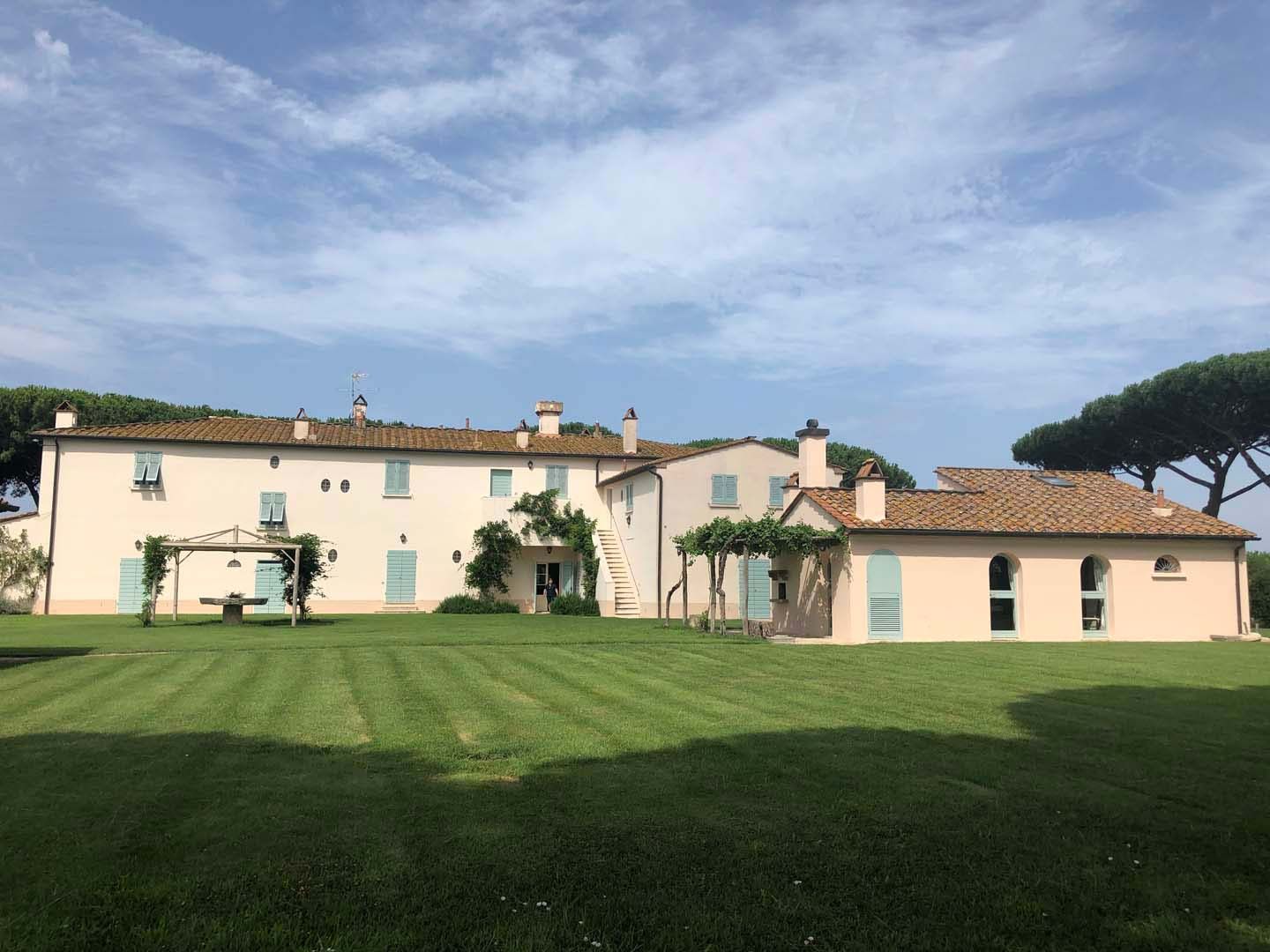
Guado al Tasso: the Antinori legacy and the quality of Bolgheri terroir
I visited Guado al Tasso winery last August with the San Francisco Wine School crew during our Tuscany wine tour. I had the unique opportunity to learn about their plot vinification and vineyards management, which is really meticulous, precise and innovative. Not an obvious task for a winery with more than 300 hectares to manage. You can read all about it below and watch some highlights of our tour in the video at the end of the article.

Guado al Tasso winery
Located on the upper coast of Maremma in Tuscany’s distinguished Bolgheri DOC wine region, Guado al Tasso has become one of the foremost producers of Bolgheri DOC wine with its more than 300 hectares of land devoted to vineyards. The winery’s roots date back to the 1600s when the noble Della Gherardesca family first began its practice of winemaking. It was in the 1930s that the land was inherited by Carlotta Della Gherardesca Antinori, the mother of Piero Antinori, and she—along with her husband Niccolò Antinori—revolutionized the wine industry with their production of dynamic Bolgheri wines. As an homage to the Della Gherardesca family and the former estate owners, the bottles of Guado al Tasso are crafted with the family crest, along with the letters “DG.”

The vineyards themselves are situated in an area on the Tuscan hillsides known as the “Bolgheri Amphitheater” because of its distinctive shape and likeness. This sloping area on the plains of the vineyard landscape create an ideal climate in which the Bolgheri DOC grapes thrive. Also, as the grapes are planted at an ideal location at the base of the amphitheater, the climate tends to yield optimal growing conditions.
Winemaking
As this appellation was only approved as a DOC in 1995, Bolgheri DOC is just now becoming recognized on a global scale. Guado al Tasso winery, known for its authentic expressions of the various styles of the Bolgheri DOC—including the bianco, rosso, rosato, and superiore—produces dynamic wines that maintain the tradition and elegance of the wine region.
For instance, the winery’s Matarocchio Bolgheri DOC Superiore, made purely from Cabernet Franc grapes, is the maximum expression for both a single grape variety and a single vineyard plot. Before the grapes are softly pressed and undergo a cold pre-fermentation maceration, they are picked by hand and selected individually. After, the wine is separated into French oak barrels and endures the fermentation process before being aged for 18 months.

Furthermore, Guado al Tasso’s Scalabrone Bolgheri DOC Rosato is crafted with Cabernet Sauvignon, Merlot, and Syrah grapes, which are harvested and fermented separately. The grapes undergo a 3 to 5 hour maceration at low temperatures—to enhance the aromatics and flavor profiles—before they are transferred to stainless steel tanks for fermentation to occur.
Additionally, the winery’s Il Bruciato Bolgheri DOC—a nuanced blend also comprised of Cabernet Sauvignon, Merlot, and Syrah—was created in 2002 when the estate endured one of the most difficult vintages. It is produced by having a part of the Merlot and Syrah musts fermented at lower temperatures to preserve their individual flavor profiles. After the fermentation occurs partially in oak barrels and some in stainless steel, the Cabernet Sauvignon is now blended together with the Merlot and Syrah. The final blend is then placed back into the oak barrels for some time before it is bottled.

Another wine, Cont’Ugo Bolgheri DOC, is created solely with Merlot grapes, and it has become a “new interpretation of the Bolgheri territory.” The grapes are grown at an altitude between 45 and 60 meters above sea level, and their character is heavily impacted by the clay soils in which they are grown. The grapes used in Cont’Ugo wines are hand picked and selected before they are transferred into stainless steel vats for fermentation.

Since 1990, Guado al Tasso Bolgheri DOC Superiore, a blend of Cabernet Sauvignon, Merlot, Cabernet Franc, and oftentimes some Petit Verdot, is produced and infamously known to “best represent the complexity and elegance of the Bolgheri terroir.” The grapes are hand-selected to ensure their quality, and then they are fermented in stainless steel for 15 to 20 days before entering oak barrels.

The final wine of Guado al Tasso estate, Vermentino Bolgheri DOC Bianco, was created out of a need for the Antinori family to re-establish an indigenous varietal in this wine region. In 1996, the first vintage of the estate’s Vermentino was established, and its production has continued to flourish in the growing conditions of the Tuscan coast.
Plot vinification and terroir
Because of Maremma’s coastal location, there is an overall temperate climate with a consistent breeze that further ameliorates the effects of any harsh summers or brutal winters. Additionally, the soils present here include a sandy clay soil and a silty clay soil comprised of a very fine gravel—both of which impart nuances to the characters of the grapes grown here and the wines produced in this Bolgheri wine region.

The vineyards of Guado al Tasso winery are dedicated to the production of the following grapes: Cabernet Sauvignon, Merlot, Syrah, Cabernet Franc, Petit Verdot, and Vermentino. And as the grapes produced in the Bolgheri wine region demonstrate, proximity to the coastline and clay-rich soils are essential to the idiosyncrasies of the wines produced by Guado al Tasso winery.
Watch the Guado al Tasso tour and tasting in this IGTV short video.


